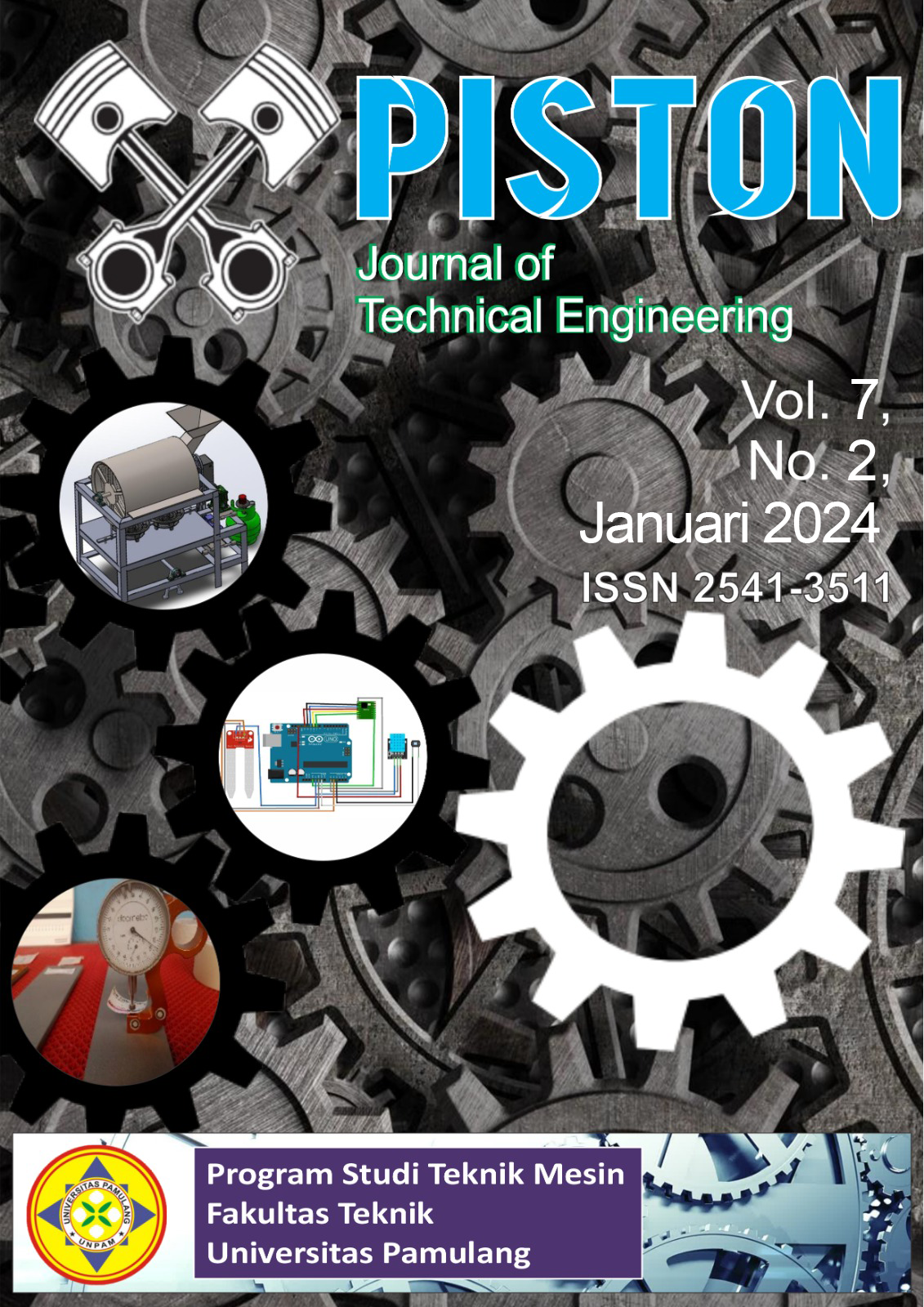LoRa-based IoT Device for Water Quality Monitoring (Case Study: Lake Toba)
DOI:
https://doi.org/10.32493/pjte.v7i2.35854Keywords:
IoT, Wireless Sensor Network, LoRa, RSSI, SNRAbstract
Lake Toba, the largest lake in Indonesia, faces water pollution problems due to many sources of household waste, fertilizer waste from rice fields, and fish feed waste. Therefore, a water quality monitoring system is needed to warn the public and visitors early before they carry out recreational activities or use water from the lake. This research aims to build a system that can monitor the water quality of Lake Toba in real-time using LoRa technology, as well as analyze the water quality of Lake Toba with the parameters pH, dissolved oxygen, temperature, and turbidity. As a result, we created a water quality monitoring system and obtained water quality analysis results from 3 locations that are always busy with tourists. The results of measurements at Pantai Pasir Putih received a temperature range of 25.5°C to 28.5°C, turbidity ranged from 4.1 to 5.5 NTU; pH levels varied between 6.8 to 7.2, dissolved oxygen levels ranged from 8 .0 mg/L to 9.0 mg/ L. The results of measurements at Siregar Aek Nalas recorded temperatures ranging from 25°C to 28°C, turbidity levels of approximately 11.49 NTU and 14.65 NTU, pH levels fluctuating between 9 and 11, dissolved oxygen levels ranging from 29 mg/L to 32 mg/L. The temperature obtained for Pantai Lumban Bulbul was 25°C, turbidity ranged from 0.62 NTU to 2.60 NTU, the pH level was also consistently measured at 8, and dissolved oxygen levels were recorded at 9-10 mg/L.References
R. F. Rahmat, Athmanathan, M. F. Syahputra, and M. S. Lydia, “Real-time monitoring system for water pollution in Lake Toba,†2016 International Conference on Informatics and Computing, ICIC 2016, pp. 383–388, Apr. 2017, doi: 10.1109/IAC.2016.7905749.
D. P. Djenal, S. Soekirno, P. Wellyantama, A. Ilyas, Sugiarto, and M. Putra, “Weather and Water Level Monitoring System for Hydrometeorological Analysis in the Lake Toba Region,†pp. 19–29, Aug. 2023, doi: 10.2991/978-94-6463-232-3_3.
I. R. Purba and N. Nurhayati, “Water Quality Of Lake Toba By Space And Time Based On Environmental Physics, Chemical Factors And Community Phytoplankton,†Eduvest - Journal of Universal Studies, vol. 2, no. 11, pp. 2379–2396, Nov. 2022, doi: 10.59188/EDUVEST.V2I11.609.
A. I. Ali, S. Z. Partal, S. Kepke, and H. P. Partal, “ZigBee and LoRa based Wireless Sensors for Smart Environment and IoT Applications,†Proceedings - 2019 IEEE 1st Global Power, Energy and Communication Conference, GPECOM 2019, pp. 19–23, Jun. 2019, doi: 10.1109/GPECOM.2019.8778505.
V. D. Gavra and O. A. Pop, “Usage of ZigBee and LoRa wireless technologies in IoT systems,†2020 IEEE 26th International Symposium for Design and Technology in Electronic Packaging, SIITME 2020 - Conference Proceedings, pp. 221–224, Oct. 2020, doi: 10.1109/SIITME50350.2020.9292150.
I. P. Manalu, F. Naibaho, E. Sri, L. Siahaan, and H. Hadi, “Analisa Kinerja LoRa di Bidang Pertanian di Desa Sitoluama, Toba,†Piston: Journal of Technical Engineering, vol. 6, no. 2, pp. 29–34, Feb. 2023, doi: 10.32493/PJTE.V6I2.28473.
H. Soy, “An adaptive spreading factor allocation scheme for mobile LoRa networks: Blind ADR with distributed TDMA scheduling,†Simul Model Pract Theory, vol. 125, p. 102755, May 2023, doi: 10.1016/J.SIMPAT.2023.102755.
F. Yulius Roi, T. Yobilio Agung, M. Lutfi, P. Teknik Elektronika, F. Teknologi, and I. Swadharma, “ALAT PELACAK BERBASIS LONG RANGE WIDE AREA NETWORK (LORAWAN)â€.
S. Sendra, L. Parra, J. M. Jimenez, L. Garcia, and J. Lloret, “LoRa-based Network for Water Quality Monitoring in Coastal Areas,†Mobile Networks and Applications, vol. 28, no. 1, pp. 65–81, Feb. 2023, doi: 10.1007/S11036-022-01994-8.
N. Wu and M. Khan, “LoRa-based Internet-of-Things: A Water Quality Monitoring System,†Conference Proceedings - IEEE SOUTHEASTCON, vol. 2019-April, Apr. 2019, doi: 10.1109/SOUTHEASTCON42311.2019.9020583.
D. Hercog, T. Lerher, M. TruntiÄ, and O. Težak, “Design and Implementation of ESP32-Based IoT Devices,†Sensors 2023, Vol. 23, Page 6739, vol. 23, no. 15, p. 6739, Jul. 2023, doi: 10.3390/S23156739.
P. Sihombing, Y. M. Siregar, J. T. Tarigan, I. Jaya, and A. Turnip, “Development of building security integration system using sensors, microcontroller, and GPS (Global Positioning System) based android smartphone,†J Phys Conf Ser, vol. 978, no. 1, Mar. 2018, doi: 10.1088/1742-6596/978/1/012105.
V. Lakshmikantha, A. Hiriyannagowda, A. Manjunath, A. Patted, J. Basavaiah, and A. A. Anthony, “IoT based smart water quality monitoring system,†Global Transitions Proceedings, vol. 2, no. 2, pp. 181–186, Nov. 2021, doi: 10.1016/J.GLTP.2021.08.062.
M. Miller, A. Kisiel, D. Cembrowska-Lech, I. Durlik, and T. Miller, “IoT in Water Quality Monitoring—Are We Really Here?,†Sensors, vol. 23, no. 2, p. 960, Jan. 2023, doi: 10.3390/S23020960/S1.
S. A. H. Almetwally, M. K. Hassan, and M. H. Mourad, “Real Time Internet of Things (IoT) Based Water Quality Management System,†Procedia CIRP, vol. 91, pp. 478–485, Jan. 2020, doi: 10.1016/J.PROCIR.2020.03.107.
M. Sabari, P. Aswinth, T. Karthik, and C. Bharath Kumar, “Water Quality Monitoring System Based on IoT,†ICDCS 2020 - 2020 5th International Conference on Devices, Circuits, and Systems, pp. 279–282, Mar. 2020, doi: 10.1109/ICDCS48716.2020.243598.
Downloads
Published
Versions
- 2024-03-14 (2)
- 2024-01-16 (1)









